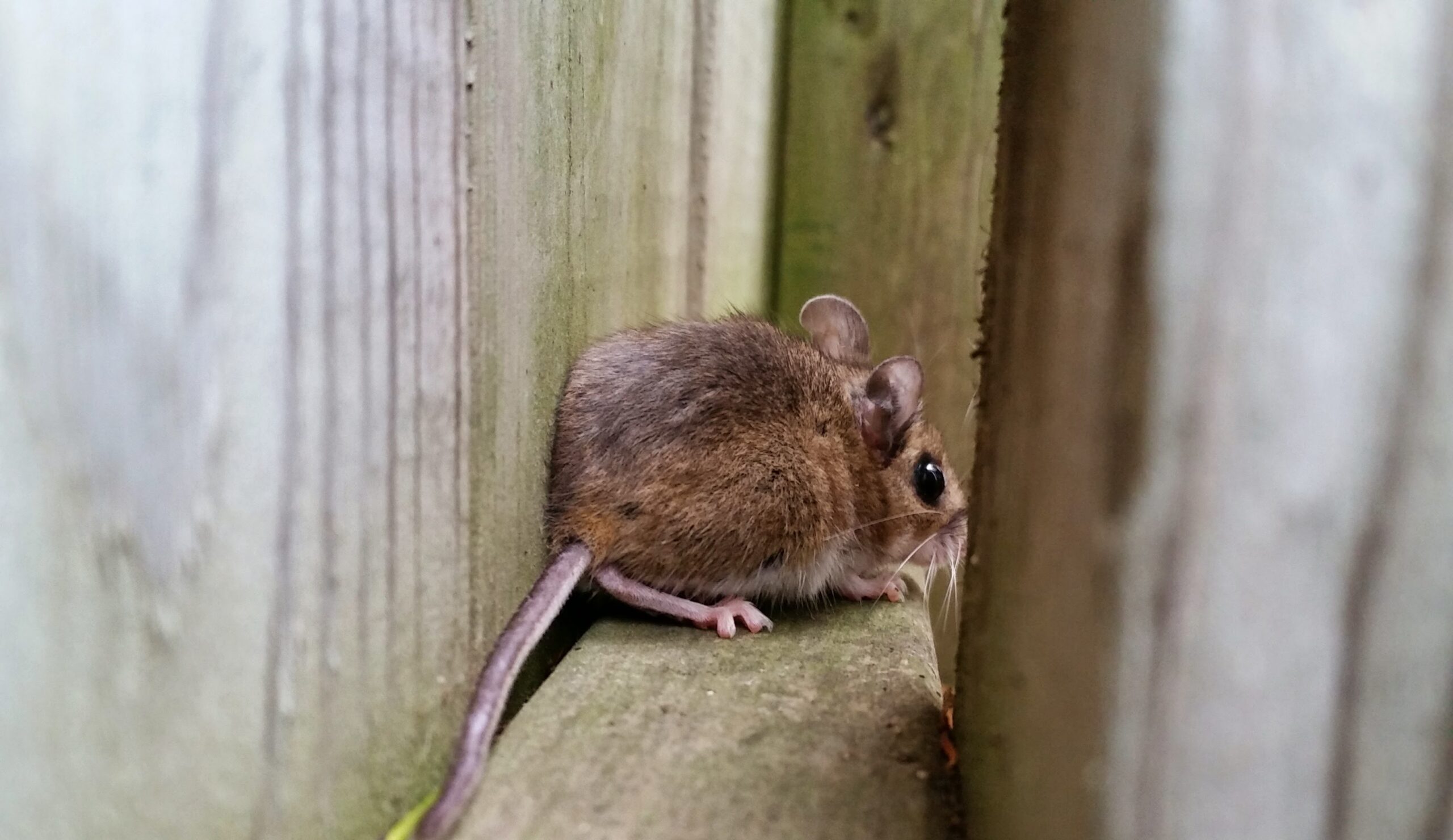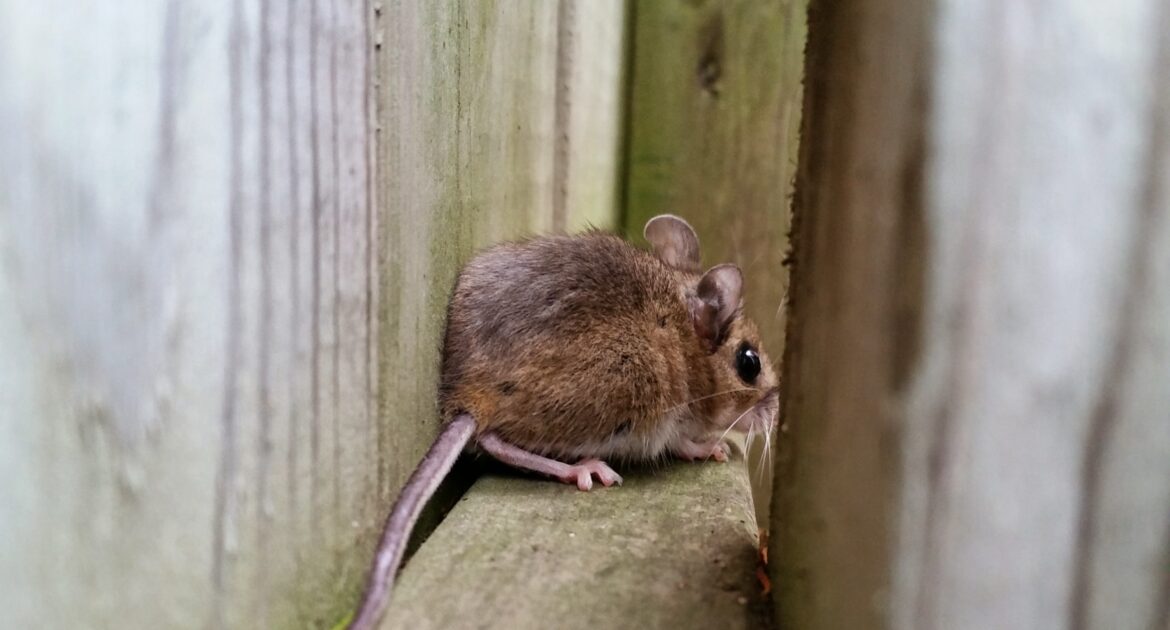At Skedaddle Humane Wildlife Control, we’ve seen firsthand how easy it is for homeowners to overlook the subtle clues of a mouse problem. Mice are experts at hiding, and unless you know exactly what to look for, you might miss the hidden signs of mice in your home. From gnaw marks to strange nighttime noises, identifying early signs is crucial before a minor issue turns into a full-blown infestation. And if you’re in Oak Grove or anywhere in Minnesota, our team specializes in wildlife removal to keep your property safe and secure.
What are the Hidden Signs of a Mouse Problem?
Mice are masters of staying out of sight, which makes it easy to miss the subtle warning signs they leave behind. While their small size helps them slip through tiny openings, their presence often becomes evident long before you spot one scurrying across the floor. Recognizing these hidden signs early is critical to preventing minor issues from escalating into a full-blown infestation.
From mysterious noises to unpleasant odors, there are several indications that mice may have made themselves at home in your space.
Here are five key signs every homeowner should watch for to identify a potential mouse problem and take action before it grows.
1. Unexplained Noises in Walls or Ceilings
Have you been hearing faint scratching or rustling noises when your home is quiet? Perhaps late at night, as you try to relax, there’s a sound that seems to come from inside your walls or above your head. These sounds are a classic indication of an issue. Nocturnal by nature, rodents tend to be most active once the sun sets, using the silence as cover to scurry through walls, ceilings, and attics.
Mice are also avid climbers; they’ll climb walls or utility pipes to access various areas of your home. Once nestled in these hard-to-reach spaces like attics or basements, they chew through insulation, wood, and even electrical wiring in pursuit of nesting materials or food. The damage they create remains hidden until the problem has escalated.
If you notice these unexplained noises, don’t ignore them. A quick inspection can reveal other subtle clues of a mouse problem, such as greasy smudges on walls or droppings near tight spaces. Early detection can save homeowners in Oak Grove from costly repairs and address potentially hazardous contamination.
2. Grease Marks and Smudges
Mice are constantly on the move, traveling the same paths along baseboards and tight spaces as they search for food. Over time, this creates greasy smudge marks on surfaces where their fur, which carries natural oils, brushes against walls or furniture. These greasy trails often appear in well-traveled areas like corners of rooms or around small openings near utility lines.
One of the most subtle clues of a mouse problem is grease marks, which often go unnoticed because they’re faint and blend into the shadows of a home. Left unchecked, these marks build up over time, becoming a clear sign of high-traffic rodent areas.
Grease trails not only confirm activity but also help wildlife removal experts trace where the rodents are entering and nesting within the property. At Skedaddle, our technicians rely on details like these to locate and close entry points while applying humane removal methods backed by over 30 years of expertise.
3. Strange Odors
A distinct, unpleasant smell could indicate more than mild inconveniences like musty basements or forgotten food items. Rodents leave a urine-like odor behind when they travel and nest inside nooks or storage areas. The smell gets stronger as the infestation grows. Often described as a sharp, ammonia-like scent, it becomes particularly noticeable in enclosed spaces such as kitchen cabinets, pantries, or storage rooms.
This odor serves a specific purpose for mice—it helps them mark trails with their scent and communicate with others in their colony. Unfortunately, it also signals to wildlife experts that contaminated areas must be handled carefully. At Skedaddle, we encounter these odors during cleanup efforts, coupled with droppings or nesting materials. Leaving these smells unaddressed allows bacteria or allergens to spread throughout your home.
If you notice an ammonia-like smell in unfamiliar locations, it’s an urgent sign you should investigate further. Containing and removing these contaminants is key to protecting the health of your family and avoiding long-term issues.
4. Holes or Gnaw Marks
No hole is too small for a rodent. With skulls the size of a dime, mice can squeeze through openings as small as 1/4 inch. Entry points around electrical wiring, vents, and plumbing pipes often provide access to an entire home. Once inside, their teeth, which continuously grow, need constant activity to stay filed down.
Signs of gnawing can appear on wires, furniture, walls, or stored food packaging. Beyond structural damage, tampered wires introduce safety risks like electrical malfunctions or potential fires. Chewing behaviors are not driven by malice—but when rodents set up camp indoors, these behaviors quickly extend deeper into homes, compounding damage.
One common observation is small, rough-edged holes along baseboards, utility lines, or cabinets. These holes serve as clear signals of intrusion that shouldn’t be overlooked. At Skedaddle, we emphasize thorough property assessments because every chew mark can point to an active route worth securing for future protection.
5. Droppings Near Food Storage
An unfortunate but telltale sign of a bigger problem is small, pellet-like droppings found in kitchens, pantries, or beneath sinks. These droppings vary in size but typically resemble dark grains of rice. Since rodents eat frequently, they leave behind large quantities anywhere they have moved through or nested.
These droppings are more than unsightly—they’re hazardous. Mouse feces can carry diseases like salmonella and hantavirus. Left in food storage or preparation areas, contamination threatens the entire household’s health. For this reason, professionals stress the importance of fully cleaning and removing contaminated materials under protective conditions.
Our process at Skedaddle focuses heavily on identifying areas of contamination. With expert care and modern equipment, our technicians clear affected zones and restore hygienic conditions safely. Doing so not only addresses existing risks but also discourages future returns with comprehensive exclusion practices.
Choose Skedaddle for Wildlife Removal in Minnesota
At Skedaddle, we pride ourselves on providing unparalleled expertise and a proven track record in humane wildlife control. Our approach to mice removal goes beyond simply addressing the visible problem; we prioritize long-term prevention and safety for your home. With over 30 years of experience, our certified technicians utilize cutting-edge techniques and equipment to detect and eliminate mice infestations effectively.
What sets Skedaddle apart is our commitment to humane practices. We emphasize non-lethal solutions and ensure the well-being of both our customers and wildlife. Additionally, our comprehensive exclusion methods stop mice from returning, offering you peace of mind. From initial inspection to follow-up prevention strategies, Skedaddle’s professional service team delivers reliable results tailored to your specific needs. Trust in our expertise to protect your home and restore your comfort efficiently and responsibly.
Secure Your Home from a Mouse Infestation
At Skedaddle Humane Wildlife Control, our team understands what homeowners face when it comes to detecting the subtle clues of a mouse infestation. Whether you’ve noticed faint noises, found droppings, or just want peace of mind, we’re here to help. Our proven methods, from thorough inspections to humane removal processes, ensure long-term solutions tailored for homes across Oak Grove and Minnesota communities.
Don’t wait for signs to multiply. If you suspect rodents are present, contact us today and take the first step toward a wildlife-free home.




